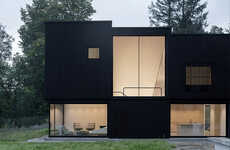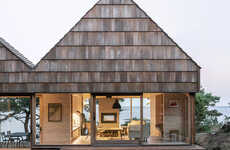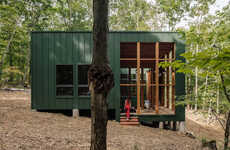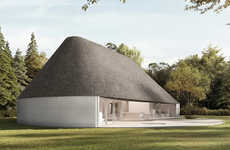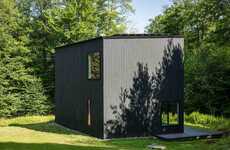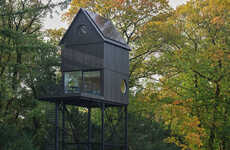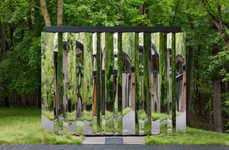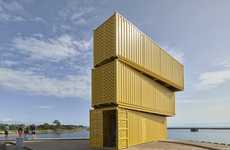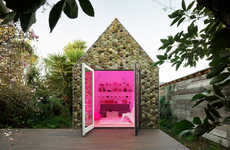
Studio KAW's Design Minimizes the Environmental Impact of a House
Employing sustainable architectural techniques and innovative technical concepts, Dutch studio KAW created an energy-positive residence in the Netherlands. While the strong lines of the structure's exterior are informed by the work of German modernist architect Ludwig Mies van der Rohe, the interior bears an all-wooden framework—from the walls to the ceiling—that creates a cozy and contemporary vibe for the household. From a sustainable point of view, the energy-positive home boasts the cross-laminated timber as a shell, which reduces the carbon dioxide generated during construction.
KAW architects strategically limited the use of doors on the first floor in order to optimize the exposure to natural light. The energy-positive home incorporates a passive heating system as well, where the household utilities are generated through a heat pump that relies on installed solar panels.
Photo Credits: Ossip van Duivenbode
KAW architects strategically limited the use of doors on the first floor in order to optimize the exposure to natural light. The energy-positive home incorporates a passive heating system as well, where the household utilities are generated through a heat pump that relies on installed solar panels.
Photo Credits: Ossip van Duivenbode
Trend Themes
1. Sustainable Architecture - The use of sustainable architectural techniques and materials, such as cross-laminated timber, can minimize the environmental impact of buildings.
2. Energy-positive Homes - Designing homes that generate more energy than they consume, through features like solar panels and passive heating systems, can help reduce carbon emissions.
3. All-wooden Framework - Utilizing wooden structures for the walls and ceiling of a house can create a cozy and contemporary aesthetic while promoting sustainability.
Industry Implications
1. Architecture and Construction - Architects and construction companies can focus on implementing sustainable techniques and materials in their designs to create environmentally-friendly structures.
2. Renewable Energy - The renewable energy industry can benefit from the growing demand for solar panels and other energy-efficient systems that support the development of energy-positive homes.
3. Interior Design and Furnishing - Interior designers and furniture makers can capitalize on the trend of all-wooden frameworks, creating modern and eco-friendly designs for houses.
3.3
Score
Popularity
Activity
Freshness

